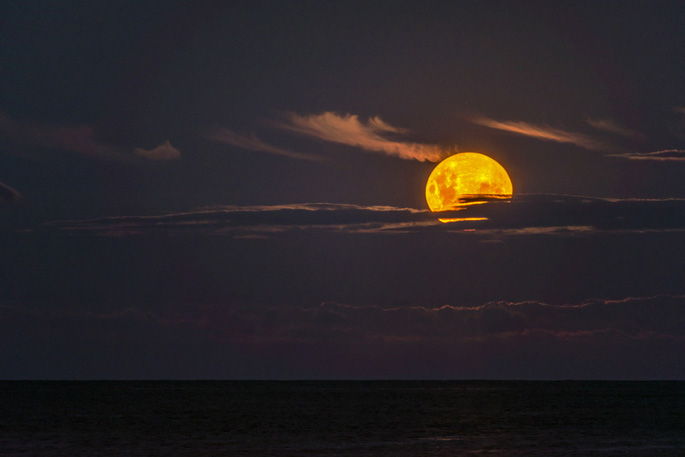The final supermoon of the year will rise in the night skies tonight, Friday August 12, – and will be a 'Sturgeon Moon”.
A building high-pressure system over New Zealand suggests clear skies for most of the country in time for its appearance.
The Royal Astronomical Society of New Zealand said the Moon would be full at 1.36pm on Friday. That's the moment when the Moon is exactly 180 degrees opposite the Sun.
The Moon will rise in Wellington at 5.32pm on tonight and set at 8.11am on Saturday, according to timeanddate.com.
The August full moon is widely known in North America as the Sturgeon Moon.
That's because the giant sturgeon of the Great Lakes and Lake Champlain were most readily caught during this part of the northern summer, according to the United States-based Old Farmer's Almanac.
'Supermoon” is more of a popular term than a scientific one, but the general concept is a full moon that happens near or at the time when the Moon is at the closest point of its orbit to Earth.
That orbit is elliptical, with the closest point known as the perigee, and the farthest point as the apogee.
The Moon's average perigee was 363,300km from Earth, and the average apogee 405,500km, Nasa said.
The perigee this month was closer at 359,828km, and happened at 5.08am on Thursday, according to timeanddate.com.
Variations in what's considered a supermoon
With the variations in how a supermoon is defined, there is some disagreement about which full moons get to be described as 'super”.
The Old Farmer's Almanac said that with the broad definition it used, there were four supermoons in 2022. Under that definition the full moon must be within 90% of perigee, and that happened four times in 2022 – in consecutive months from May to August.
Using the 90% definition, many years have four supermoons, including the past two years and the next two.
But even with that broad definition, after August 2022, the next supermoon won't be until July 2023.
It is contentious. The Nasa Science website described the August 2022 full moon as a 'marginal” supermoon.
And timeanddate.com defines a supermoon as a full moon that happens when the centre of the Moon is less than 360,000km from the centre of Earth. On that basis it shows only two supermoons for 2023 – both in August.



0 comments
Leave a Comment
You must be logged in to make a comment.